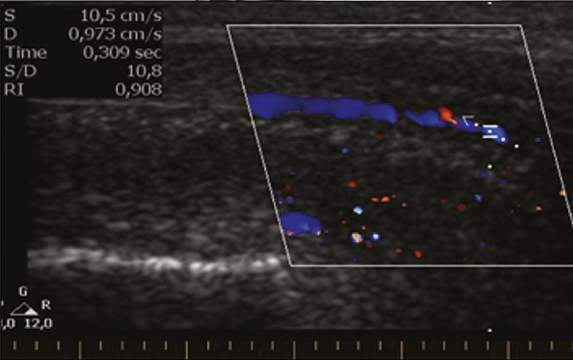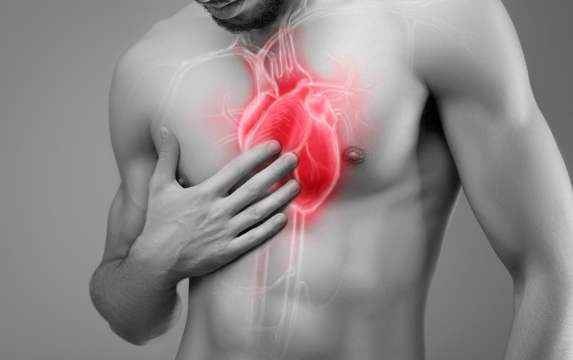You are trying to get pregnant, but the two stripes on the stick fail to appear? If you and your partner are having trouble getting pregnant, you should know that in one-third of the cases, male infertility is the cause. Continue reading about the causes and the range of options to help maximize your chances of having a child.
What is Male Infertility?
About 15 out of 100 couples cannot achieve a spontaneous pregnancy, and in half of the cases, male infertility is involved, whether as the sole cause or due to a combination of female and male factors.
Generally, male infertility (also described as male subfertility) is when pregnancy is not achieved after a minimum of 12 months of unprotected sexual intercourse at the right time and frequency, when the woman is known to be fertile.
Male infertility can have various causes, though, in fact, it can be any health issue in a man that lowers the chances of his female partner getting spontaneously pregnant. During the past decades, certain Western lifestyle factors have been acknowledged as affecting fertility, and it is currently accepted that after the age of 36, male and female fertility declines. Therefore, in these ages, if spontaneous pregnancy does not occur within 6 months of trying, it is recommended for couples to see a healthcare provider.
Problems related to sperm quality or quantity are the most common causes of male infertility, occurring in 75% of the cases. Factors such as low sperm count, azoospermia (no sperm in the ejaculate), decrease in sperm motility and its ability to swim towards the egg, and an abnormal sperm shape are the most prevalent ones.
Common Causes of Male Infertility
Numerous causes can lead to male infertility. They can be generally categorized as being congenital, anatomical, related to diseases or to, sexual dysfunction, or acquired. Poor general health may likewise impair fertility.
Congenital Causes
systems, including genetic disorders that affect these systems. Some genetic causes result in azoospermia, low sperm count (oligospermia), or hypogonadism (low testosterone). Other congenital causes can cause structural or functional problems in the testicles, the urethra (the penile tube that transports sperm and urine out of the penis), or the duct transporting sperm from the testicles to the urethra.
Examples include:
- Undescended testicles(cryptorchidism) – when the testicles fail to descend to the scrotum and remain in the abdomen, where the body temperature is higher and can impair the sperm.
- Cystic fibrosis– a genetic disease that may cause the absence of the seminal tract, such as the epididymis, vas deferens, or seminal vesicles.
- Kallman Syndrome– a genetic disorder characterized by a lack of sex hormone development due to problems in the pituitary gland, which produces hormones associated with sperm production and puberty.
- Klinefelter’s syndrome– in men, it is associated with 3 sex chromosomes (XYY) instead of 2 (XY), and infertility.
- Epispadias and hypospadias– congenital defects of the urethra.
Anatomical Causes
Are associated with functional problems in the male reproductive system, usually due to defects that develop later in life.
Examples include:
- Retrograde Ejaculation– a condition in which, during ejaculation the sperm flows back into the bladder, instead of out of the body, due to a failing bladder sphincter or urethral obstruction.
- Varicocele– in about 40% of male infertility cases, the cause is varicocele – enlarged veins around the testicle vessels that slow blood flow and testicular oxygen supply, increase the temperature within the testicles, and undermine the testicular toxin clearance process. All of these damage testicular sperm production.
Medical Conditions
Various health problems can cause male infertility, whether directly or indirectly, such as infections, diseases and malignancies.Some cause epididymis (inflammation of the tube transferring sperm from the testicles) while others cause blockages of ducts and tubes in the male reproductive system, and certain conditions affect endocrine organs, which regulate the secretion of sex hormones.
Examples include:
- Diabetes– an endocrine (hormonal) disease that can cause hypogonadism (reduction in testosterone levels) and azoospermia.
- Prostatitis– inflammation of the prostate gland that can decrease sperm production
- Pituitary adenoma– a tumor in the pituitary gland that regulates testosterone production
- Testicular cancer
- Syphilis– a bacterial sexually transmitted disease that causes urethral inflammation. Without treatment it can spread to the testicles and prostate gland and undermine semen production and transfer.
Sexual Dysfunction
A common cause of male infertility which can influence the response to sexual stimulation, the ability to achieve an erection and to ejaculate. Sexual dysfunction can occur due to physical causes (such as diabetes and cardiovascular disease), psychological causes (such as performance anxiety or depression), or a combination of both.
Examples include:
- Low sex drive(libido)
- Erectile Dysfunction– a continuous inability to achieve or maintain an erection hard enough for satisfactory intercourse
- Anejaculation– the inability to ejaculate whereby the sperm cannot reach the egg.
Acquired Causes
Result from an injury to the male reproductive tract, including trauma, medications, exposure to toxins, and lifestyle factors that impact fertility.
Examples include:
- Pelvic injury or surgery: can cause testicular trauma or injury to pelvic nerves associated with sexual function.
- Prostatectomy – a surgery for prostate removal can lead to erection and ejaculation problems
- Various chemotherapy treatments and pelvic radiation– might seriously undermine sperm quality
- Anabolic steroids– long-term usage can undermine sperm count and motility.
- High alcohol consumption– is linked to testicular shrinkage and azoospermia.
- Smoking– associated with sperm problems (azoospermia or low sperm count) and erectile dysfunction.
- Oral and rectal sulfasalazine– an anti-inflammatory drug for the treatment of Crohn’s disease and arthritis, can impair sperm production. However, this is reversible when the drug is withdrawn.
- Lead exposure– is associated with azoospermia or low sperm count.
How is Male Infertility treated?
The treatment of male infertility will be determined according to the underlying cause. The good news is that only in rare cases will a sperm donation be required, and in most cases, sperm cells can be retrieved from the future biological father.
- Hormonal Treatment – in the case of hypogonadism, hormonal treatment will be given to induce testicular sperm production.
- Sperm Washing – this procedure is designed to increase the chances of pregnancy when sperm quality and motility are poor. During this procedure, the most motile sperm is selected and separated from the rest of the semen specimen. The best sperm will be used for Intra Uterine Insemination.
- Intra Uterine Insemination – conducted in fertility clinics, this treatment is performed in cases of poor sperm (or egg) quality, sperm transportation problems, sexual dysfunction or retrograde ejaculation. Following sperm washing, a concentrated sperm specimen is placed into the top of the uterus as close as possible to the egg through a small plastic catheter inserted into the cervix.
- In Vitro Fertilization (IVF) – also referred to as “test-tube baby” (colloquial) and “artificial fertilization.” It is an assistive reproductive technique used when a woman fails to conceive naturally, whether because of blocked fallopian tubes or due to her partner’s low sperm count. In this procedure, the egg is removed from the ovary, fertilized with a sperm in the lab, and the embryo is then placed into the uterus.
- Intracytoplasmic Sperm Injection (ICSI) – in cases of severe deficits in sperm quality or when conception is not achieved by regular IVF procedure, there is a technology for selecting and injecting an individual sperm directly into the egg. The procedure is conducted using an ultra‐high magnification microscope (over 6000x), which enables to locate the best sperm cells.
- Varicocele Surgery (varicocelectomy) – performed when there is a problem with both testicles (when 1 testicle is involved, the man is considered fertile). This can be done either by tying the enlarged veins or by embolization – a process in which the enlarged veins are blocked.
- Antibiotic Treatment – Bacterial diseases such as pneumonia, UTI or any other infection may temporarily impair sperm cells and their function. When this is the source of the problem, antibiotic treatment can help resolve it.
- Micro-surgery – is designed for sperm retrieval from a testicle in conditions involving obstructions, the absence of a sperm duct, and azoospermia. There are various sperm retrieval procedures, such as laparoscopy to remove obstructions, testicular or epididymal sperm aspiration, or the opening of the epididymal cyst for sperm retrieval. In cases of problems in sperm production and azoospermia, a testicular tissue specimen is taken to examine the tubules for the presence of sperm, which will then undergo sperm washing and be used in IVF.
The Company hereby clarifies that the information contained on the website is for informational purposes only, and is not intended to be a substitute for professional medical and healthcare advice, and does not constitute medical advice or opinion. Always seek the advice of your physician or other qualified health provider with any medical condition or question you may have regarding a medical condition.





